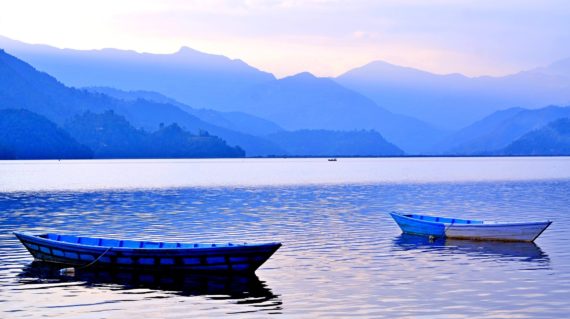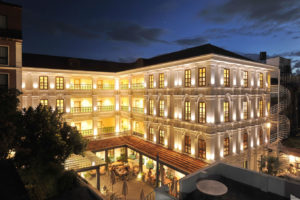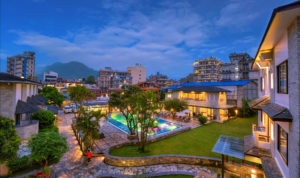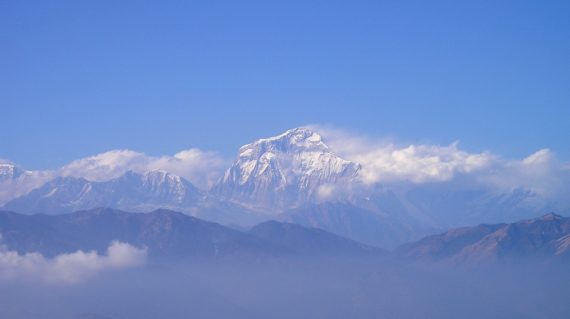
Dhaulagiri Circuit Trekking
fromDhaulagiri Circuit Trek is one of the most difficult treks in Nepal which leads to the foot of Mount Dhaulagiri, the world’s seventh-highest mountain, and is located in the Annapurna Region (8167m). The Dhaulagiri Circuit Trek travels over lateral moraine, cold glaciers, and snow-covered hills. The trekking route provides magnificent views of the famous Dhaulagiri massif and other mountain peaks higher than 7000m along the journey.
Including the Dhaulagiri Base Camp at 4,740m and traversing two passes, the French Pass at 5,360m and Dhampus Pass at 5,200m, is a strenuous journey that demands a high degree of fitness. The rewards of this journey, however, include breathtaking vistas of Tukuche Peak (6,920m), Dhaulagiri I (8,167m), Dhaulagiri II (7,751m), Dhaulagiri III (7,715m), and Dhaulagiri V (7,715m) (7,618m).
The Kali Gandaki is the deepest gorge in the world, while Dhaulagiri rises above it. The circular path offers breathtaking views of the entire Dhaulagiri mountain. Dhaulagiri, which was found in 1808 and is 8,167 meters high, was regarded to be the highest mountain in the world until Kanchenjunga overtook it 30 years later; Mount Everest then reclaimed it! The French Pass, which leads into the magnificent region known as Hidden Valley, was created as a result of a French team’s discovery of the Dhaulagiri Circuit route in the 1950s.
The circuit trail passes through towns, terraced agriculture, rivers, gorges, glaciers, and moraines as it travels. There are many opportunities to soak in the breathtaking mountain panoramas with plenty of time to acclimatize before tackling the high passes.
When you arrive at Tribhuvan International Airport in Kathmandu, the Dhaulagiri Circuit Trek begins. The true trekking trip begins after the gorgeous flight to Pokhara and the drive to Darbang as you pass through heavily forested pathways and terraced highland districts. The trekkers also pass by several Magar communities, allowing them to learn about their way of life and culture.
Italian Base Camp, Dhaulagiri Base Camp, and Japanese Base Camp are the three base camps that the trek reaches. Trekkers may witness the magnificent icefall cascading from the northeast col between Dhaulagiri and Tukuche Peak from Dhaulagiri Base Camp. The French Pass (5360m), the highest point of our walk, is reached by gently ascending through the glacier moraines along a white, ice path. The Hidden Valley, located behind the Dhaulagiri massif, is reached by continuing along the trail.
Along the route from Marpha hamlet, popularly known as apple city, to the town of Jomsom, you will also traverse the Dhampus Pass and Thapa Pass. The Dhaulagiri Circuit Trek is ideal for adventure-loving hikers because it involves travelling a high mountain pass and walking across cracking glaciers.
-
Reviews 0 Reviews0/5
-
Vacation Style Holiday Type
-
Activity Level Extreme
-
Group Size Small Group
Trekking Highlights:
- Reach the base camp of the world’s seventh-highest mountain: Dhaulagiri
- Walk through the magnificent high passes: the French pass and Dhampus pass
- Get very close to numerous Mountain peaks
- Enjoy the delightful view of Dhaulagiri massif
- Trek through beautiful forest paths and visit the hidden valley
Why Trek with Us?
Quality:
For us, quality includes both luxury and a feeling of community. We warrant the following link. The Dhaulagiri Circuit Journey has been planned so that we may create memories with the locals and ourselves in addition to hiking the trek. We’ll socialize, take photos, eat together, and settle in.
The tales of the locals, the sincerity of the monks, and priests at the monasteries and temples, and the innocence of the children playing in the chilly streets will lift our spirits more than the trekking we’ll be doing on our hike.
Giving back to the community:
The Nepalese communities that contribute directly or indirectly to the trekking sector in this nation blessed with exceptional mountains gave birth to Elite Explorer. We are explorers, not simply trekkers, and we want to contribute in some way to the towns, villages, and routes we pass on our adventure through the Dhaulagiri Circuit Trek, even if it’s just a small amount.
We will assist in cleaning the area around the high-traffic villages that fall on our trail, and provide some first aid kits to the local clinics, schoolchildren there will receive stationery and books, and villagers along the route will receive meals.
Additionally, we will document the unseen stories about the struggles and the lifestyle in the area that we would be traveling to.
- Pick up and transfer to the booked accommodation by Elite Explorer representative from Tribhuwan International Airport Kathmandu. (please look for your full name card outside the arrival hall, +977 985 115 5251 arrival assistance WhatsApp call or message)
- Twin-sharing double bedroom accommodation with buffet breakfast in Kathmandu and Pokhara.
- Guided know your surrounding tour in Kathmandu by our expert guide.
- Kathmandu Pokhara 30 minutes domestic flight.
- Pokhara-Beni drive by jeep.
- Guided trek by our expert and experienced English-speaking trekking guide.
- A porter to help carry our bags (trekking bags must not exceed 20 kg 2 pax combined)
- Locally available breakfast, lunch, and dinner including tea or coffee.
- Guide Porter salary remunerations and insurance
- Trekkers Information Management System (TIMS) card
- Necessary documentation and Dhaulagiri trekking permit.
- First aid kit including oxygen meter
- Marpha- Pokhara drive by locally available jeep
- Pokhara Kathmandu domestic flight.
- Government tax
- Airport transfer upon completion of the program
- Client personal expenses and bar bill including soft drinks
- Natural Calamities beyond our control and expenses incurred in such rescue services.
- Travel/Medical Insurance
- Day 01 Arrival in Kathmandu
- Day 02 Trek Preparation and Exploring Kathmandu
- Day 03 Kathmandu Pokhara flight, Pokhara Beni drive
- Day 04 Beni to Babiachaur, 5 hours
- Day 05 Babiachaur to Dharapani, 6 to 7 hours
- Day 06 Dharapani to Muri, 5 hours
- Day 07 Muri to Boghara, 5 hours
- Day 08 Boghara to Dobang, 5 hours
- Day 09 Dobang to Choriban Khola, 5 hours
- Day 10 Choriban Khola to Italian Base Camp, 5 hours
- Day 11 Acclimatization Day at Italian Base Camp
- Day 12 Italian Base Camp to Glacier Camp, 6 to 7 hours
- Day 13 Glacier Camp to Dhaulagiri Base Camp, 7 hours
- Day 14 Acclimatization Day at Dhaulagiri Base Camp
- Day 15 Dhaulagiri Base Camp to Hidden Valley via French Pass, 7 hours
- Day 16 Hidden Valley to Yak Kharka via Dhampus Pass, 7 hours
- Day 17 Yak Kharka to Marpha, 5 hours
- Day 18 Marpha- Pokhara drive
- Day 19 Pokhara free day
- Day 20 Pokhara free day
- Day 21 Pokhara- Kathmandu
- Day 22 Departure



How many hours do we trek each day?
We will trek for six hours on average, but depending on the region you trek in, you might go for nine hours straight, including breaks for meals.
What transportation will it be to the trekking starting point?
Depending on the trekking region, either private transportation or air travel will be used.
Can I leave the things behind before heading for trekking?
Yes, we’ll tag your bag and keep it at your accommodation until you get back. Likewise, you should travel as lightly as possible when trekking.
Is it very cold in Kathmandu on my arrival?
There are four seasons and 300 days of sunshine in Nepal. As a result, Kathmandu’s lowest recorded temperature is -3 degrees Celsius, or 26.6 degrees Fahrenheit. However, while trekking, the temperature may drop to -13 degrees Fahrenheit or -25 degrees Celsius. For more details on what to pack and bring please contact your dedicated travel consultant or you can also contact us via E-mail.
Do I need to be extra careful of altitude sickness?
Our itineraries are made to give you plenty of time for acclimatization, reducing the likelihood that you will have altitude sickness. Every evening before or after dinner, our extremely knowledgeable guide will give us a briefing for the following day’s trekking, including instructions to prevent altitude sickness over 3500 meters. You must notify our guide right away if you have shortness of breath, headache, exhaustion, nausea, vomiting, a rapid heartbeat, or insomnia since altitude sickness can be fatal.
How many kg of bag pack am I allowed to carry?
The greatest option is usually to trek light. The best-recommended backpack weight is 10 kg for trekking bags and 5 kg for carry-on luggage because one must also include basics. (It also serves as the flight to Lukla’s weight restriction.)
Will there be a porter to carry my bag pack apart from the guide?
Yes, a porter will assist you in carrying the trekking backpack packs.
Can you tell me about the food in the mountains?
Most of the food is freshly prepared, but meats may have been stored for a while. Freshly prepared Daal and Bhat, a staple of traditional Nepali cuisine, are the finest.
How basic are tea houses, can I shower every day?
A basic bed, private or shared bathrooms, cold water in the absence of electricity or sunlight, charging the wifi battery, and the absence of a room heater. This is how simple tea houses seem. Further, during the cold winter, the water freezes in the pipe leaving no running water.As mentioned earlier, having a hot shower (or bucket full of hot water) is feasible in most tea houses, however, if unfavorable circumstances like an electricity cut-off occur, you may have to wait to take a hot shower.
Is there wifi or cellular signals in the mountains?
In the tea houses along the trails, there is wifi, however, the signal strength and speed may not be as advertised. On request, Team Elite Explorer will provide you with a local sim card for data subscription.
How about power, will there be charging points?
There will, in fact, be charging ports. Be considerate when charging your electronics as tea houses provide shelter for other hikers as well.
In case of medical issues, how will I get assistance?
Our guide will evaluate the case according to its seriousness, seek advice from the office as necessary, and then decide on the spot whether to transport the patient to the nearest medical facilities or call for help. When trekking in Nepal, kindly make sure to have comprehensive travel medical insurance.
Can 3 years and 80 plus age trek in the mountains?
Every age group can find the ideal trekking trails in Nepal. So every one of any age can hike in the mountains. When working with infants and the elderly, we take extra precautions both in the planning of the itineraries and on the ground.
Lastly, how fit should I be for trekking?
For the trek, you need to be both physically and mentally prepared. The outcome of your adventure entirely rests on you. We advise selecting the trekking routes based on your degree of fitness. There is little doubt that shorter routes are simpler than longer ones. A higher level of fitness will be needed for the longer treks. So, try to be in top physical shape.


